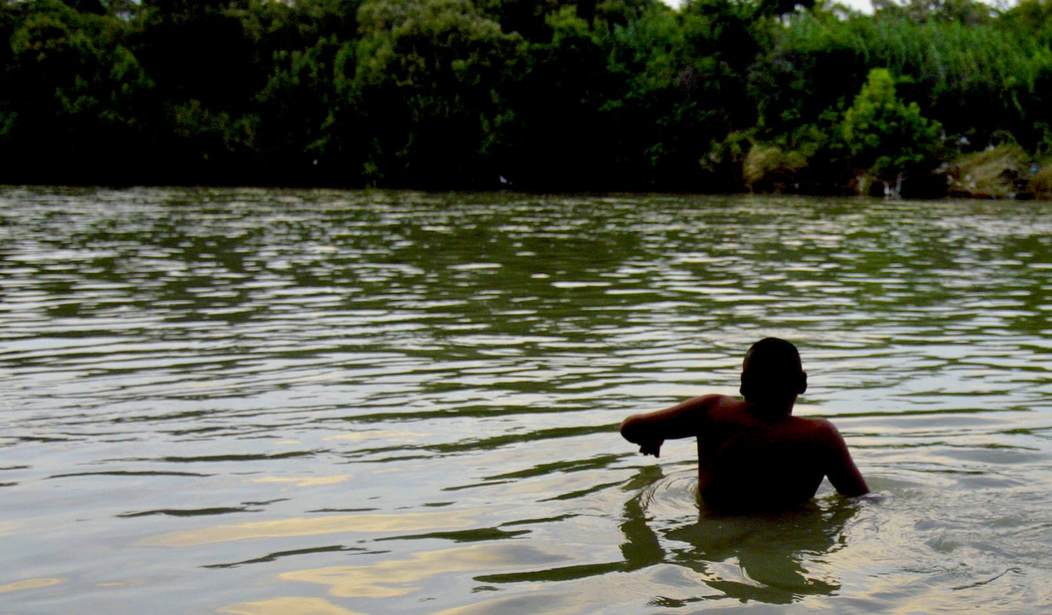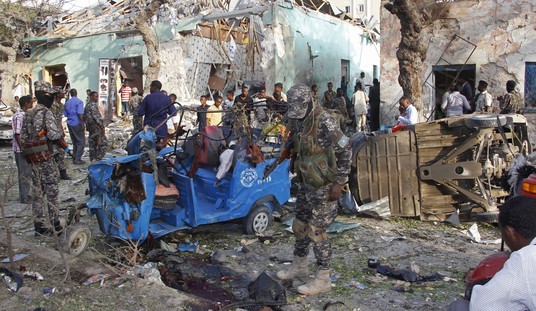(Click here for prior articles in this series.)
————————–
On June 24, 2008, Somalia natives Abdullahi Omar Fidse and Deka Abdalla Sheikh walked across the pedestrian bridge from Reynosa, Mexico to the Hidalgo, Texas Port of Entry and requested political asylum from an American immigration officer. The pair told authorities they needed American sanctuary because the terrorist group al-Shabaab had killed their families, and wanted to kill them too.
Even though it was a lie, the story worked for Sheikh. She was quickly awarded asylum and took up permanent residence in Fitchburg, Wisconsin, on a path to American citizenship.
While still in Texas detention, however, Fidse luckily confided to two fellow Somalis — who turned out to be paid FBI informants — that he actually came to conduct an unspecified “operation” for al-Shabaab, according to court records from his prosecution in Texas.
Fidse told them he once was involved in an abortive plot to attack the U.S. ambassador in Kenya, even penciling out the assassination plans and describing how mines would have been used to “blow up” the U.S. Marines in the protective detail. Fidse said he deeply admired al-Qaeda leader Osama bin Laden, confided that he had gotten military training at a camp run by an Afghanistan war veteran, and had extensive knowledge of heavy weapons, including shoulder-fired rockets, machine guns, AK-47 assault rifles, and explosives.
In other conversations, Fidse indicated he was more than merely a trained grunt. He had once procured a $100,000 battlewagon for al-Shabaab that was blown up, killing all aboard, in a 2006 battle with Ethiopian forces at Idaale, Somalia. Fidse also said he cried when a U.S. airstrike killed al-Shabaab leader Aden Hashi Ayrow, and that “the infidels must suffer the consequences.”
One could have presumed Fidse was groundlessly boasting or puffing up a bad-boy resume, except that investigators found a phone number in his cell phone memory card belonging to a well-known al-Shabaab terrorist later implicated in a 2010 Uganda soccer stadium bombing that killed more than 70 spectators.
Fidse’s sworn asylum story fell apart and unraveled Sheikh’s, too. In 2012, both pled guilty to asylum fraud and obstructing a terrorism investigation, and are serving long prison sentences.
This true anecdote, and several others just like it, illustrates a central problem with the scarcely known American law enforcement effort I described in some detail last week to slow or halt the smuggling of “special interest alien (SIA)” migrants like Fidse from Islamic “countries of interest” to the U.S. southwestern border. Since 9/11, new border security legislation resulted in a campaign in which some 250 Immigration and Customs Enforcement agents have been posted in at least 48 foreign countries, assigned to break up the sophisticated transnational smuggling operations that transport such migrants long before they can reach our physical border.
But only through the purest serendipity did FBI informants placed in a American-side detention center discover Fidse and Sheikh had already slipped our supposed ICE cordon abroad. According to court filings from the case, an Ethiopian smuggling “gang” had helped smuggle Fidse and Sheikh from Kenya — for $4,000 each — all the way to the Texas-Mexico border on counterfeit passports and Mexican visas. Had Fidse kept his mouth shut, he would no doubt have joined Sheikh in asylum bliss to do who knows what.
They have a lot of company.
There are numerous indications that the American campaign to suppress SIA smuggling has faltered. As I wrote last week, I propose this is due to a decided policy drift away from the original purpose of our current border security regimen (counter-SIA smuggling) to the squeaky wheel of Mexican migration, enabled by a lack of media and congressional interest in the counter-SIA effort.
SIA smugglers and their complex intercontinental networks continue to operate with relative impunity to bring Syrians, Iraqis, Pakistanis, Somalis, and many others from Muslim countries to the American land borders as asylum seekers like the proverbial knife through butter. For instance, a 2010 GAO report that examined ICE work hours devoted to human smuggling investigations found that the percentage of time spent on alien smuggling investigations versus “other investigative areas, such as drugs,” over the previous four years was only 16-17 percent.
“Investigators,” the report stated, “are conducting immigration-related activities that are not consistent with (ICE’s) primary mission of conducting criminal investigations,” and had routinely been diverted “from conducting alien smuggling” investigations. ICE promised to do better. And so did the U.S. Border Patrol when a 2012 GAO investigation of its counter-SIA campaign showed similar neglect. It concluded that Border Patrol headquarters had not even considered SIA smuggling to be its problem, despite a requirement in its own 2004 strategic plan to make it so. The GAO report noted that more than 500 SIAs had reached the border. While these had been caught, the greatest percentage already penetrated more than 20 miles inland. How many were never caught may never be known.
Whether agency promises to do better were ever fulfilled is hard to say, but doubtful. An indicator comes from my own research on SIA smuggling, which I conducted for my recently awarded master’s degree from the Naval Postgraduate School’s Center for Homeland Defense and Security. I spent months collecting every U.S. prosecution I could find of an SIA smuggler since 9/11 so I could deconstruct how they operate. I could only come up with 19 prosecutions.
Perhaps the most compelling indication of campaign failure is that SIAs like Fidse appear to have reached the U.S. southwestern border through Mexico in steady annual numbers since the start, ranging from between 500 and 800 a year just on the southwest border. Apprehension and encounter numbers remain a government secret, but enough have slipped out in various media reports over the years to get a decent sense of them. For example, when I worked as a reporter for Hearst Newspapers, I was able to obtain and publish data showing that from September 2001 through 2007, nearly 6,000 SIAs had reached the southwest border.
Data released elsewhere since then suggests the traffic has continued at a regular pace.
For instance, a confidential Texas Department of Public Safety intelligence report leaked in 2015, citing U.S. Customs and Border Protection data, asserted that more than 740 encounters with SIAs just in Texas during 2014 reflected a 15 percent increase over the same period in 2013. Among them were migrants from Afghanistan, Bangladesh, Egypt, Iran, Iraq, Lebanon, Pakistan, Somalia, and Turkey.
Granted, these are extremely tough and expensive investigations, and one can see from the public court case files that ICE grunts stationed abroad did great work with the resources and leads to which they were limited. But one can’t help but wonder how many more SIA smuggling rings they could have broken up, and how much more investment they might have been given, had Fidse or any of those who have followed in his footsteps conducted a Paris-style attack in a big American city.
(Next week: SIA smugglers and the under-appreciated threat they pose to American homeland security.)








Join the conversation as a VIP Member